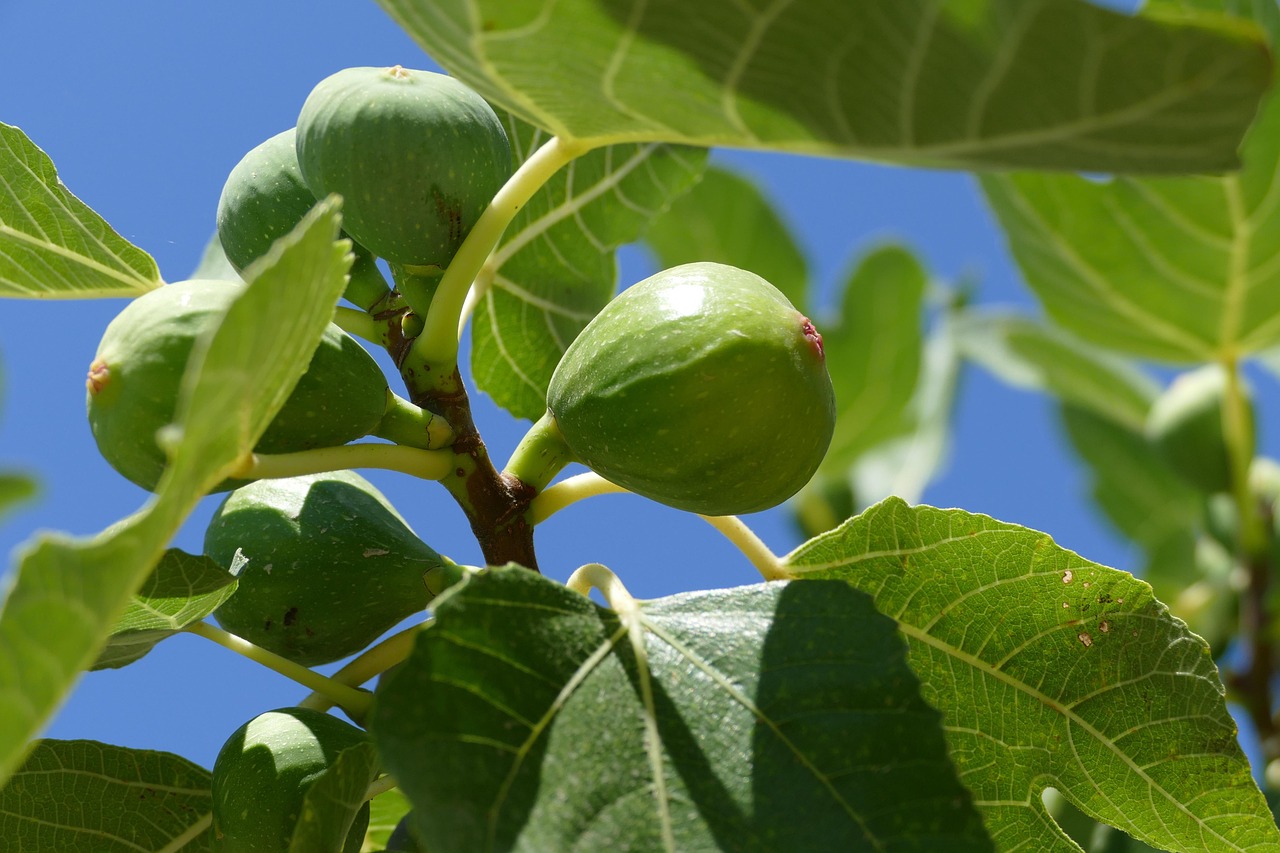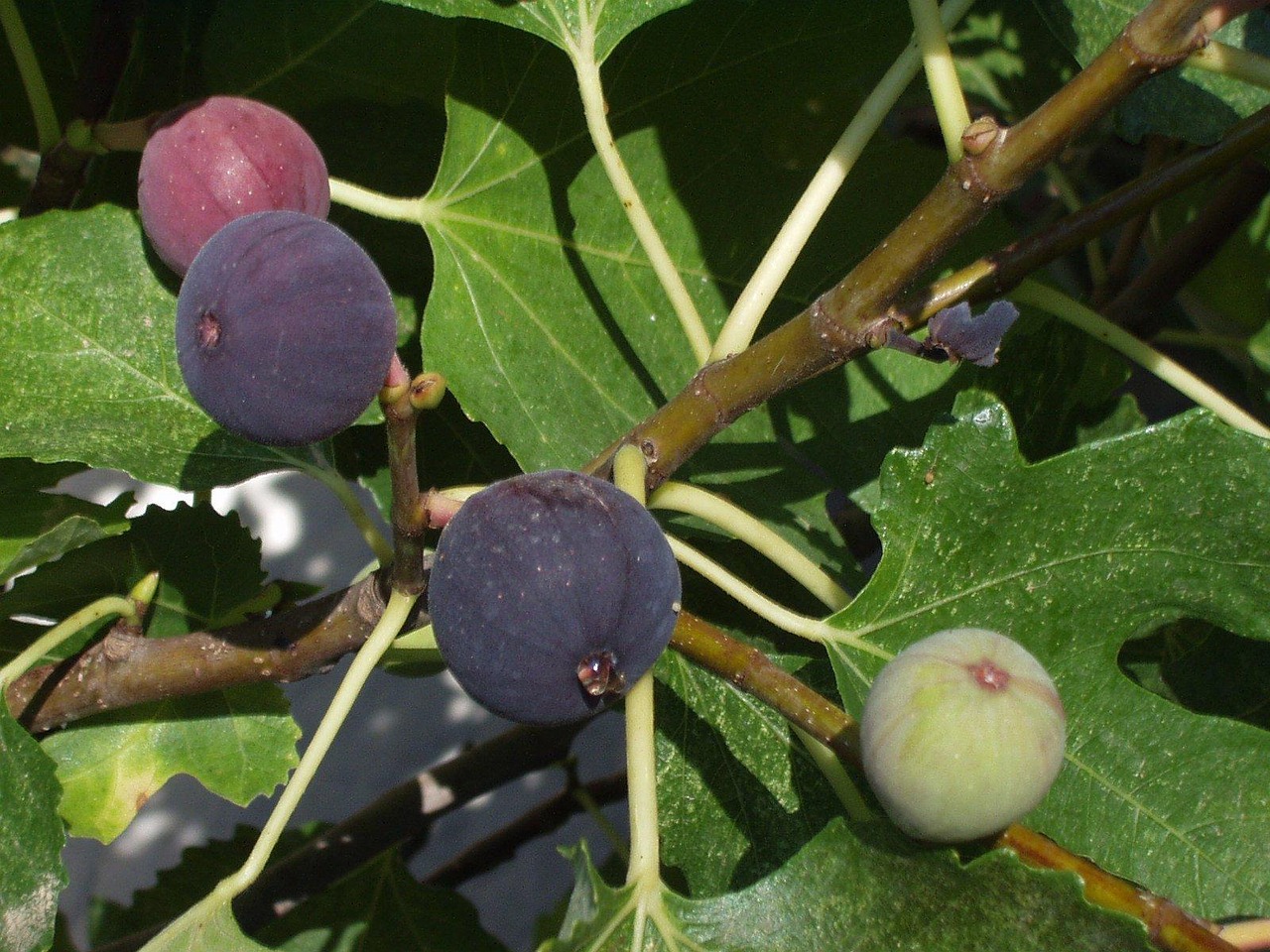Jesus cursed the fig tree as a symbolic act, illustrating the spiritual barrenness of Israel. This event signifies divine judgment on unfruitfulness and serves as a warning against hypocrisy and lack of faith.
Understanding the Context of the Fig Tree Incident
The cursing of the fig tree is a notable event recorded in the Gospels of Matthew and Mark. It occurs during Jesus’ final days in Jerusalem, just before his crucifixion. This act is rich in symbolism and carries significant theological implications. Understanding the context is crucial to grasping its meaning.

In Jewish culture, the fig tree often symbolizes Israel itself. The tree’s fruit represents the faithfulness and obedience expected of God’s people. Therefore, Jesus’ action can be interpreted as a prophetic statement about Israel’s spiritual condition at that time.
The Biblical Account
The story is found in two primary passages: Matthew 21:18-22 and Mark 11:12-14, 20-21. In these accounts, Jesus approaches a fig tree, hoping to find fruit. Upon discovering it has none, He curses it, declaring it will never bear fruit again. The next day, the disciples notice that the tree has withered from the roots.
This event occurs shortly after Jesus’ triumphant entry into Jerusalem, where he is hailed as the Messiah. Following his arrival, he cleanses the temple, further emphasizing his role as a prophet and divine authority. The fig tree incident serves as a continuation of this theme, demonstrating Jesus’ power over nature and his authority to pronounce judgment.

Symbolism in the Cursing of the Fig Tree
To fully appreciate why Jesus cursed the fig tree, one must consider its symbolism. Fig trees are mentioned frequently in the Bible, often representing prosperity and God’s blessings. In contrast, a barren fig tree signifies disappointment and judgment. The absence of fruit on the tree symbolizes Israel’s failure to produce spiritual fruit.
In this context, the fig tree acts as a metaphor for the religious leaders of Israel, who outwardly appeared pious but lacked genuine faith and righteousness. Jesus’ curse represents God’s disapproval of superficial religiosity that does not bear true fruit.
Key Themes Related to the Incident
- Judgment: The act illustrates God’s judgment against unfruitfulness.
- Faith: Jesus later teaches his disciples about the power of faith in prayer.
- Hypocrisy: The cursing serves as a warning against pretending to be righteous without true faith.
Theological Implications
This event raises important theological questions regarding God’s expectations for His people. It emphasizes that God desires more than mere outward appearances; He seeks genuine spiritual fruit. The cursing of the fig tree serves as a reminder that faith without works is dead.

Additionally, this incident foreshadows the eventual fate of Jerusalem and its temple, which would face destruction due to unfaithfulness. Jesus’ actions encapsulate His mission to call people back to authentic faith and relationship with God.
Reflection on Jesus’ Actions
The cursing of the fig tree prompts reflection on our own lives. Are we producing spiritual fruit? Do our actions align with our professed beliefs? Jesus’ warning resonates today as it did in His time. It challenges us to evaluate our spiritual health and commitment to following Him.
In conclusion, understanding why Jesus cursed the fig tree involves examining its cultural significance, biblical context, and theological implications. This act was not merely a display of power but rather a profound statement regarding faith, fruitfulness, and divine judgment.
The Historical Context of Fig Trees in Ancient Israel
To understand the significance of Jesus cursing the fig tree, it is essential to consider the historical and cultural context of fig trees in ancient Israel. Fig trees were not only a common source of food but also held symbolic meanings in Jewish tradition. They represented prosperity, peace, and God’s blessings upon His people.

In agrarian societies like ancient Israel, agricultural products were vital to the economy and daily life. Figs were especially valued for their nutritional content. Here are some key points about fig trees in that era:
- Symbol of Abundance: Fig trees were often associated with abundance and fertility in biblical texts.
- Protection: They provided shade and shelter, making them a desirable species for gardens and homes.
- Religious Significance: Figs appeared in various biblical narratives, symbolizing blessings from God.
Fig Trees in Scripture
Throughout the Bible, fig trees are mentioned frequently. They appear as symbols in both the Old and New Testaments. Here are some notable references:
| Scripture Reference | Context |
|---|---|
| Genesis 3:7 | Adam and Eve used fig leaves to cover themselves after realizing their nakedness. |
| Micah 4:4 | The fig tree is a symbol of peace, where each person sits under their own tree. |
| Mark 11:13-14 | The account of Jesus cursing the barren fig tree. |
Understanding Spiritual Fruitfulness
The concept of fruitfulness extends beyond physical fruit in the Bible. It represents spiritual growth and the manifestation of God’s work in a believer’s life. Jesus often spoke about bearing fruit as an essential aspect of discipleship.
In John 15:1-8, Jesus describes Himself as the true vine, and believers as branches. He emphasizes that those who remain in Him will bear much fruit, illustrating the importance of abiding in Christ for spiritual vitality. This principle is closely related to the fig tree incident, highlighting the expectation that God’s people should produce good works and exhibit genuine faith.
- Faith: True faith will naturally result in acts of love and kindness.
- Good Works: Believers are called to serve others and reflect God’s character.
- Spiritual Growth: A vibrant relationship with God leads to personal transformation and growth.
Interpreting Jesus’ Actions Through Prophetic Tradition
Jesus’ cursing of the fig tree can also be viewed through the lens of prophetic tradition. Throughout the Old Testament, prophets often used symbolic actions to convey God’s messages to His people. These actions were powerful visual aids that communicated divine judgment or warnings.
For example, the prophet Jeremiah used symbolic actions to illustrate God’s displeasure with Israel’s unfaithfulness. Similarly, Jesus’ act with the fig tree serves as a prophetic sign of God’s judgment on Israel for its lack of spiritual fruitfulness.
The Role of Discipleship and Faith in the Narrative
This incident also emphasizes the role of discipleship. The disciples witnessed Jesus cursing the fig tree and later learned from Him about faith and prayer. In Mark 11:22-24, Jesus teaches them about having faith in God and believing that their prayers will be answered.
This lesson highlights an essential aspect of a believer’s life: faith should be accompanied by action. Just as Jesus expected the fig tree to bear fruit, He expects His followers to demonstrate their faith through their actions and prayers.
The cursing of the fig tree serves as a powerful reminder that faith is not merely a passive belief; it requires active engagement with God and a commitment to living out His will.
Fig Trees as a Symbol of Judgment in the Bible
Throughout the Bible, fig trees are often used as metaphors for judgment and accountability. This symbolism is crucial in understanding why Jesus cursed the fig tree. The act was not just a display of power but a declaration of God’s judgment on Israel’s spiritual barrenness.
In various prophetic texts, fig trees are referenced when discussing the consequences of disobedience to God. These references highlight the expectation that God’s people should produce fruit in accordance with their covenant relationship with Him. Here are a few notable examples:
- Hosea 9:10: The Lord compares Israel to early figs that are ripe, symbolizing how God once delighted in His people.
- Jeremiah 24: God shows Jeremiah two baskets of figs, one with good figs representing those who would be restored, and the other with bad figs symbolizing judgment.
- Joel 1:7: The fig tree is mentioned as suffering destruction due to God’s judgment upon the land.
The Connection Between Fig Trees and Spiritual Life
The fig tree’s lack of fruit in Jesus’ parable not only signifies judgment but also emphasizes the importance of spiritual vitality. In biblical terms, fruitfulness is a sign of health, both physically and spiritually. Just as a healthy fig tree is expected to bear fruit, so too are believers expected to exhibit spiritual growth and good works.
In a broader context, the absence of fruit can indicate spiritual death. This theme recurs throughout Scripture, where God repeatedly calls His people to examine their lives for evidence of faith and obedience. Jesus’ cursing of the fig tree serves as a stark warning about the consequences of failing to live according to God’s calling.
Lessons from the Cursing of the Fig Tree
The incident with the fig tree offers several lessons for believers today. Each lesson emphasizes aspects of faith, accountability, and spiritual growth. Here are some key takeaways:
- Accountability to God: Believers are accountable for their spiritual lives. Just as the fig tree was expected to bear fruit, so are Christians expected to live in accordance with their faith.
- The Danger of Hypocrisy: The fig tree appeared healthy but was barren. This serves as a reminder that outward appearances do not guarantee spiritual vitality.
- God’s Patience and Judgment: The act of cursing the fig tree illustrates God’s patience with His people. However, there is a limit to His tolerance for unfruitfulness.
Jesus’ Authority Over Nature
Another essential aspect of this narrative is Jesus’ authority over nature. When He cursed the fig tree, it withered immediately. This demonstrates His divine power and serves as a testament to His identity as the Son of God. Throughout the Gospels, Jesus performs miracles that reveal His authority over creation.
This authority can be seen in various events such as calming the storm (Mark 4:39) and walking on water (Matthew 14:25). Each act reinforces His divine nature and emphasizes that He has control over both spiritual and physical realms.
The Role of Faith in Response to Jesus’ Actions
Following the cursing of the fig tree, Jesus teaches His disciples about faith. In Mark 11:22-24, He encourages them to have faith in God and assures them that they can move mountains through prayer. This teaching underscores the importance of faith as a driving force behind effective prayer and action.
Faith is not just a belief; it requires trust and reliance on God’s will. Jesus’ lesson to His disciples highlights that genuine faith leads to transformative actions. Thus, after witnessing the withering of the fig tree, they were reminded of the potency of faith in their relationship with God.
Applying the Lessons Today
The message conveyed by Jesus through the cursing of the fig tree is still relevant today. Believers are called to examine their lives actively. Are they producing spiritual fruit? Are their actions consistent with their faith? These questions challenge individuals to reflect on their relationship with God and strive for spiritual growth.
As followers of Christ, it is essential to remain vigilant about spiritual health. Regular self-examination can help identify areas needing improvement and encourage efforts toward greater faithfulness. The cursing of the fig tree serves not only as a historical event but also as an ongoing call to action for believers seeking to live fruitfully in their faith journey.
Exploring Further Implications of the Fig Tree Incident
The cursing of the fig tree not only serves as a lesson about faith and spirituality but also reflects broader theological themes found throughout the Bible. By examining these themes, believers can gain a deeper understanding of their faith and their relationship with God.
One significant implication is the relationship between faith and action. The fig tree’s barrenness serves as a metaphor for individuals who may profess faith yet lack the accompanying works that demonstrate true belief. James 2:17 states that “faith by itself, if it is not accompanied by action, is dead.” This reinforces the notion that genuine faith manifests in tangible ways, leading to acts of kindness, service, and a commitment to God’s commands.
Community and Collective Accountability
The cursing of the fig tree also highlights the concept of collective accountability within the community of believers. Just as individual actions can reflect spiritual health, the collective behavior of a congregation or community can signify its overall fidelity to God’s calling. Here are some points to consider:
- Shared Responsibility: Believers are called to encourage one another in their spiritual journeys. A community that fosters growth and accountability can help prevent spiritual barrenness.
- Corporate Fruitfulness: Just as a healthy tree bears fruit, so too should a vibrant church community produce good works that impact the surrounding environment.
- Witness to the World: A fruitful community serves as a testament to God’s love and grace, drawing others to Him through their actions.
The Importance of Repentance
Another crucial theme that arises from the cursing of the fig tree is repentance. Jesus’ actions serve as a stark reminder that unfruitfulness can lead to judgment. This calls for believers to engage in regular self-assessment and genuine repentance when they fall short. The act of turning back to God demonstrates humility and a desire to realign with His will.
Repentance is a vital part of spiritual growth. It opens the door for transformation and renewal. By acknowledging shortcomings and seeking forgiveness, believers can begin to bear fruit once again. This cycle of repentance, transformation, and renewed fruitfulness is central to maintaining a vibrant faith.
Final Thoughts
The incident of Jesus cursing the fig tree is rich with meaning and offers valuable lessons for believers today. It serves as a powerful reminder of the importance of spiritual fruitfulness in one’s life. Jesus’ actions highlight the expectation that faith should be active and expressed through good works.
As followers of Christ, individuals are called to examine their lives continually. Are they living in alignment with their beliefs? Are they producing fruit that honors God? The cursing of the fig tree challenges believers not only to reflect on their personal spiritual health but also to consider their role within their communities.
Ultimately, this narrative encourages Christians to actively cultivate their faith through prayer, service, and accountability. Jesus’ teaching on faith and action remains relevant, urging believers to strive for authenticity in their relationship with God. By doing so, they can ensure that they are not like the barren fig tree but rather a vibrant testimony of God’s love and grace in the world.
The call to action is clear: bear fruit in every season of life by remaining connected to Christ, engaging in meaningful works, and fostering a community that reflects God’s glory. Through these commitments, believers can navigate their spiritual journeys with purpose and integrity.
